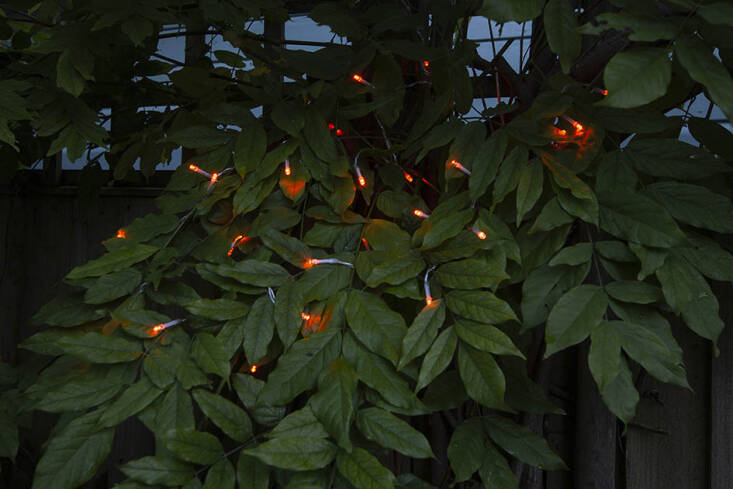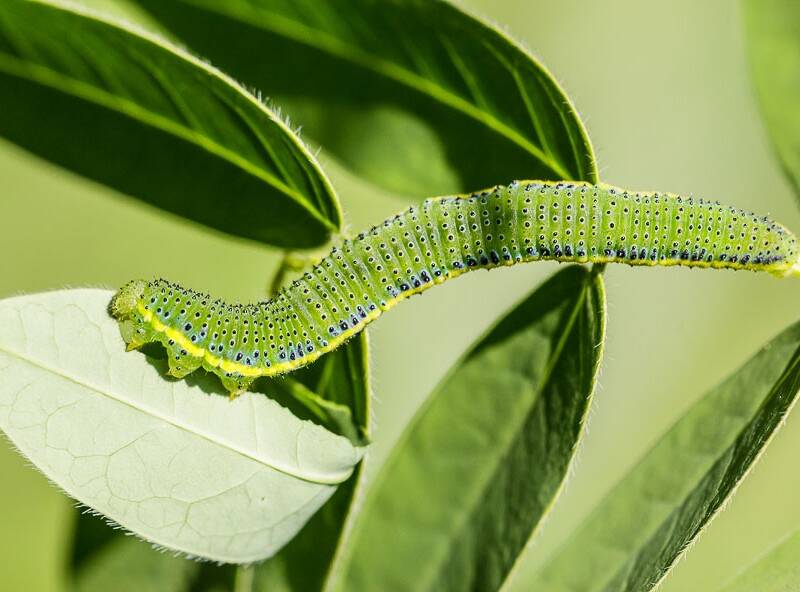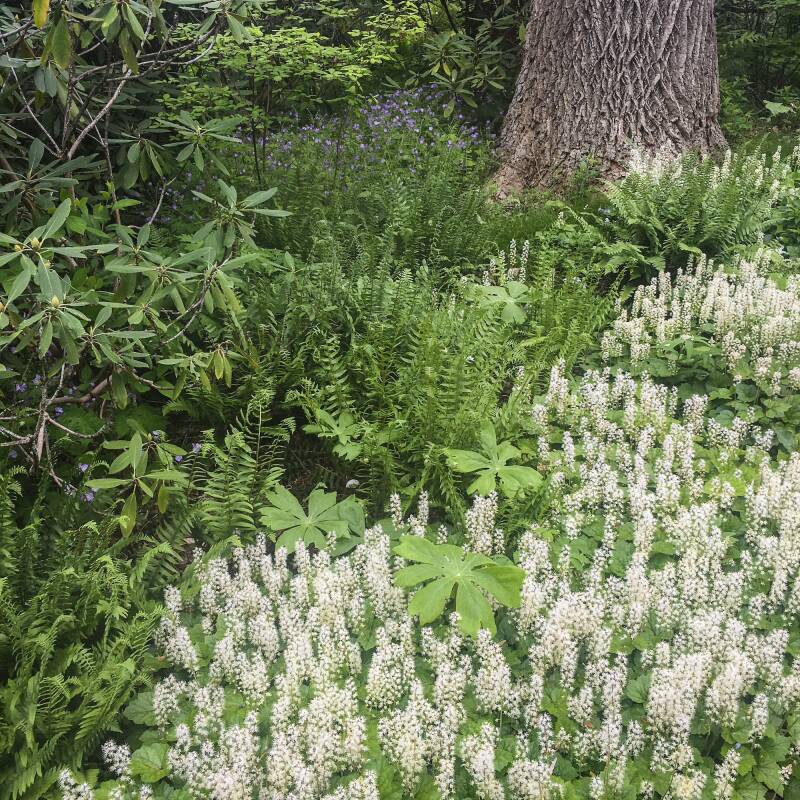When considering holiday lighting for outdoors, spare a thought for the neighbors—and we don’t mean the human kind. Crepuscular and nocturnal animals are blinded by glare (think of a deer in headlights) or disoriented in a way that seriously affects navigation, pollination, hunting, and mating. Ecologists would rather see no unnecessary exterior lighting, but they do extend the caveat that warm light, used in moderation and dimmed, is “less bad.”
Lights in the blue spectrum brighten the night sky more than any other and should be avoided as insects, frogs, bats, and larger mammals are more sensitive to icy white, blue, green, and UV. Instead, aim for the effect of a clear night sky in the country, gazing at the constellations by the light of the moon. Perhaps this will connect with a memory of fireflies in June, their twinkling lights bringing the starlight down to the ground. Embrace the drama of small, intentional lighting.

Speaking of fireflies (and glow worms in Europe), warm white impedes reproduction, since they rely on their own bioluminescence to attract mates. In summer, use hooded shades directed downwards and as close to the lit subject as possible (close to the ground for a path or illuminating just a table). It needs to be purposeful: closing blinds and curtains in winter keeps light directed where it is needed.

Orange lights for Hallowe’en easily translate as gold for the winter holiday. Terrain’s socket strands with interchangeable bulbs are designed to be used inside or out. We like the “pumpkin spice” colors for extended use throughout the year.

In her book We Are the ARK, Mary Reynolds suggests that the human desire to light everything up is due to our inherent fear of the dark. She advises sitting in a completely unlit part of the garden, and being receptive to its activity.

Throughout the year, Hay’s PC Portable Lamp provides directional downlight, better for light pollution, better for wildlife. It is battery-powered and freestanding for use indoors and out. Most of the models have opaque shades; one is translucent.

A pared-down Danish design from Stelton looks good anywhere, having been inspired by pier lighting. The degree of illumination is adjustable to 40 percent or 70 percent of its full intensity.
For more animal-friendly landscape ideas, see:
- Ask the Expert: Edwina von Gal, on How to Help the Birds
- Ask the Expert: How to Create a Much-Needed ‘Nectar Corridor’
- Monarch Butterflies Are Nearing Extinction: 5 Ways to Help












Have a Question or Comment About This Post?
Join the conversation (0)